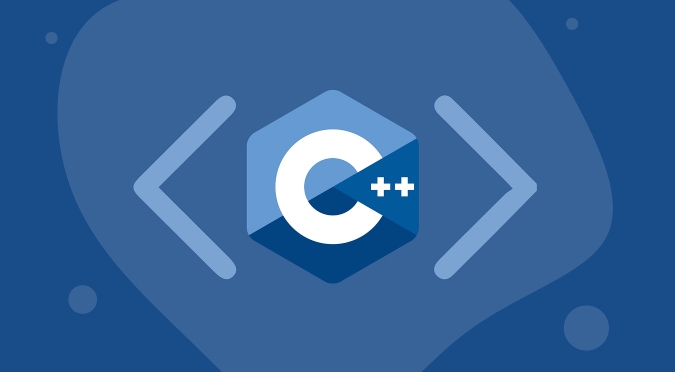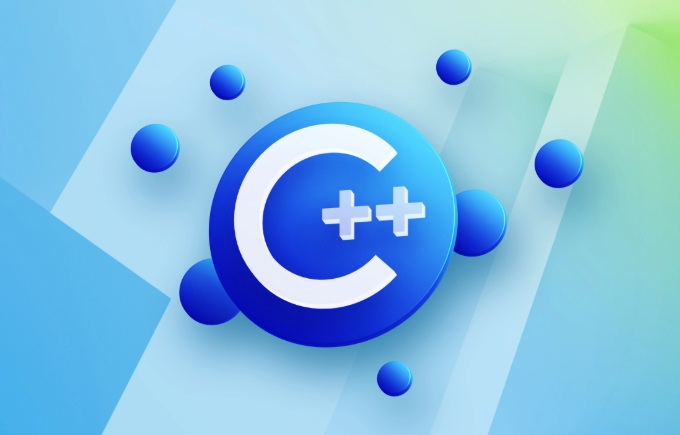How to convert a string to uppercase or lowercase in C ?
In C , strings can be converted to uppercase or lowercase by processing each character using std::toupper or std::tolower from

In C , converting a string to uppercase or lowercase isn't something you can do directly with a built-in function for the entire string, but it's straightforward once you know how to work with character-by-character conversion using standard library functions.

Use std::toupper and std::tolower from <cctype></cctype>
C provides std::toupper and std::tolower in the <cctype></cctype> header. These functions operate on individual characters, so to convert an entire string, you'll need to loop through each character and apply the transformation.
Here’s a simple example:

#include <iostream>
#include <string>
#include <cctype>
int main() {
std::string input = "Hello World!";
// Convert to uppercase
for (char &c : input) {
c = std::toupper(static_cast<unsigned char>(c));
}
std::cout << input << std::endl;
// Convert back to lowercase
for (char &c : input) {
c = std::tolower(static_cast<unsigned char>(c));
}
std::cout << input << std::endl;
return 0;
}A few things to note:
- Always cast the character to
unsigned charbefore passing it tostd::toupperorstd::tolower. This avoids undefined behavior for negative values. - These functions modify characters in place. If you want to preserve the original string, make a copy first.
Consider using Boost for convenience
If you're working on a project where third-party libraries are allowed, the Boost library offers convenient utilities like boost::algorithm::to_upper_copy and boost::algorithm::to_lower_copy.

Example:
#include <boost/algorithm/string.hpp>
#include <string>
#include <iostream>
int main() {
std::string input = "Hello World!";
std::string upper = boost::algorithm::to_upper_copy(input);
std::string lower = boost::algorithm::to_lower_copy(input);
std::cout << upper << std::endl;
std::cout << lower << std::endl;
return 0;
}This method is cleaner and handles edge cases well, but it adds a dependency on Boost, which may not be ideal for small projects or embedded systems.
Watch out for localization issues
When dealing with non-English characters (like accented letters or characters from other alphabets), be aware that std::toupper and std::tolower behave according to the current locale settings. By default, they only handle ASCII characters correctly.
If your application needs to support Unicode properly:
- Stick to ASCII unless you have a specific need for internationalization.
- Otherwise, consider using libraries like ICU (International Components for Unicode) for robust handling of multilingual text.
Also, keep in mind:
- Some characters don’t have uppercase or lowercase equivalents.
- Case conversions might change the number of characters in some languages (e.g., German ß → SS when uppercased).
So, whether you're just tweaking basic strings or preparing for more complex text processing, knowing how to use std::toupper and std::tolower gives you solid control. For simpler code or larger applications, Boost or ICU can help clean things up. Either way, it's not too hard once you get used to looping through characters.
The above is the detailed content of How to convert a string to uppercase or lowercase in C ?. For more information, please follow other related articles on the PHP Chinese website!

Hot AI Tools

Undress AI Tool
Undress images for free

Undresser.AI Undress
AI-powered app for creating realistic nude photos

AI Clothes Remover
Online AI tool for removing clothes from photos.

Clothoff.io
AI clothes remover

Video Face Swap
Swap faces in any video effortlessly with our completely free AI face swap tool!

Hot Article

Hot Tools

Notepad++7.3.1
Easy-to-use and free code editor

SublimeText3 Chinese version
Chinese version, very easy to use

Zend Studio 13.0.1
Powerful PHP integrated development environment

Dreamweaver CS6
Visual web development tools

SublimeText3 Mac version
God-level code editing software (SublimeText3)

Hot Topics
 C Initialization techniques
Jul 18, 2025 am 04:13 AM
C Initialization techniques
Jul 18, 2025 am 04:13 AM
There are many initialization methods in C, which are suitable for different scenarios. 1. Basic variable initialization includes assignment initialization (inta=5;), construction initialization (inta(5);) and list initialization (inta{5};), where list initialization is more stringent and recommended; 2. Class member initialization can be assigned through constructor body or member initialization list (MyClass(intval):x(val){}), which is more efficient and suitable for const and reference members. C 11 also supports direct initialization within the class; 3. Array and container initialization can be used in traditional mode or C 11's std::array and std::vector, support list initialization and improve security; 4. Default initialization
 Explain RAII in C
Jul 22, 2025 am 03:27 AM
Explain RAII in C
Jul 22, 2025 am 03:27 AM
RAII is an important technology used in resource management in C. Its core lies in automatically managing resources through the object life cycle. Its core idea is: resources are acquired at construction time and released at destruction, thereby avoiding leakage problems caused by manual release. For example, when there is no RAII, the file operation requires manually calling fclose. If there is an error in the middle or return in advance, you may forget to close the file; and after using RAII, such as the FileHandle class encapsulates the file operation, the destructor will be automatically called after leaving the scope to release the resource. 1.RAII is used in lock management (such as std::lock_guard), 2. Memory management (such as std::unique_ptr), 3. Database and network connection management, etc.
 What is a destructor in C ?
Jul 19, 2025 am 03:15 AM
What is a destructor in C ?
Jul 19, 2025 am 03:15 AM
The destructor in C is a special member function that is automatically called when an object is out of scope or is explicitly deleted. Its main purpose is to clean up resources that an object may acquire during its life cycle, such as memory, file handles, or network connections. The destructor is automatically called in the following cases: when a local variable leaves scope, when a delete is called on the pointer, and when an external object containing the object is destructed. When defining the destructor, you need to add ~ before the class name, and there are no parameters and return values. If undefined, the compiler generates a default destructor, but does not handle dynamic memory releases. Notes include: Each class can only have one destructor and does not support overloading; it is recommended to set the destructor of the inherited class to virtual; the destructor of the derived class will be executed first and then automatically called.
 What is high-frequency virtual currency trading? The principles and technical implementation points of high-frequency trading
Jul 23, 2025 pm 11:57 PM
What is high-frequency virtual currency trading? The principles and technical implementation points of high-frequency trading
Jul 23, 2025 pm 11:57 PM
High-frequency trading is one of the most technologically-rich and capital-intensive areas in the virtual currency market. It is a competition about speed, algorithms and cutting-edge technology that ordinary market participants are hard to get involved. Understanding how it works will help us to have a deeper understanding of the complexity and specialization of the current digital asset market. For most people, it is more important to recognize and understand this phenomenon than to try it yourself.
 C bitwise operators explained
Jul 18, 2025 am 03:52 AM
C bitwise operators explained
Jul 18, 2025 am 03:52 AM
The bit operator in C is used to directly operate binary bits of integers, and is suitable for systems programming, embedded development, algorithm optimization and other fields. 1. Common bit operators include bitwise and (&), bitwise or (|), bitwise XOR (^), bitwise inverse (~), and left shift (). 2. Use scenario stateful flag management, mask operation, performance optimization, and encryption/compression algorithms. 3. Notes include distinguishing bit operations from logical operations, avoiding unsafe right shifts to signed numbers, and not overuse affecting readability. It is also recommended to use macros or constants to improve code clarity, pay attention to operation order, and verify behavior through tests.
 Using std::optional in C
Jul 21, 2025 am 01:52 AM
Using std::optional in C
Jul 21, 2025 am 01:52 AM
To determine whether std::optional has a value, you can use the has_value() method or directly judge in the if statement; when returning a result that may be empty, it is recommended to use std::optional to avoid null pointers and exceptions; it should not be abused, and Boolean return values or independent bool variables are more suitable in some scenarios; the initialization methods are diverse, but you need to pay attention to using reset() to clear the value, and pay attention to the life cycle and construction behavior.
 How to convert a string to uppercase or lowercase in C ?
Jul 19, 2025 am 01:34 AM
How to convert a string to uppercase or lowercase in C ?
Jul 19, 2025 am 01:34 AM
InC ,stringscanbeconvertedtouppercaseorlowercasebyprocessingeachcharacterusingstd::toupperorstd::tolowerfrom1.Casteachcharactertounsignedcharbeforeapplyingthefunctiontoavoidundefinedbehavior.2.Modifycharactersinplaceorcopythestringifpreservingtheori
 Member Initialization Lists in C
Jul 19, 2025 am 02:03 AM
Member Initialization Lists in C
Jul 19, 2025 am 02:03 AM
In C, the member initialization list is used to initialize member variables in the constructor, especially for const members, reference members, class members without default constructors, and performance optimization. Its syntax begins with a colon and is followed by a comma-separated initialization item. The reasons for using member initialization list include: 1. The const member variable must be assigned value at initialization; 2. The reference member must be initialized; 3. Class type members without default constructors need to explicitly call the constructor; 4. Improve the construction efficiency of class type members. In addition, the initialization order is determined by the order of members declared in the class, not the order in the initialization list, so be careful to avoid relying on uninitialized members. Common application scenarios include initialization constants, references, complex objects and parameter-transferred constructions







